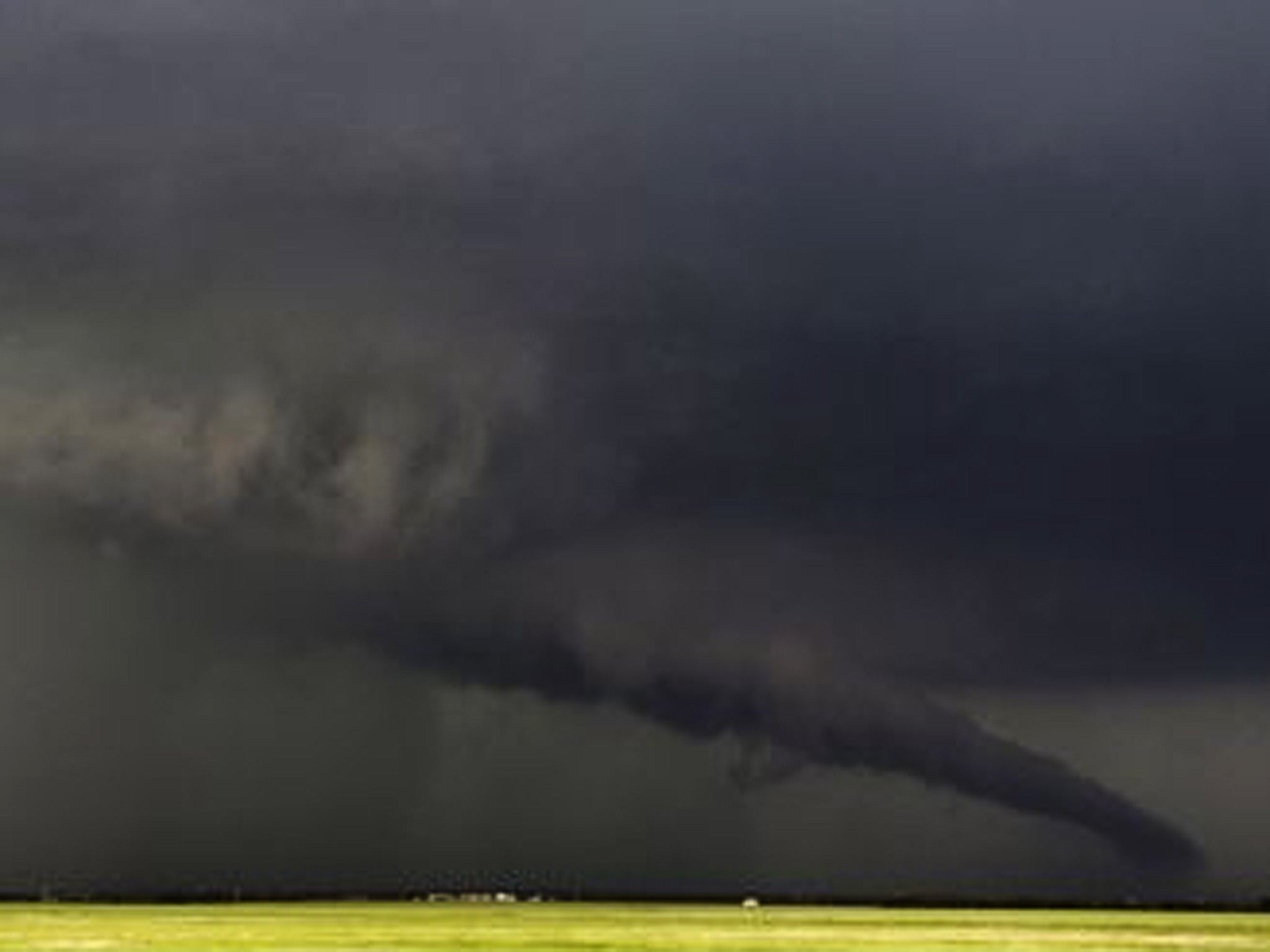200 mph winds, 12 miles of devastation: What makes a tornado?
There are reports that debris was carried over 100 miles from Moore

A tornado, often known as a twister in the US, is a spinning column of air that joins a cloud (normally the moisture-rich cumulonimbus) and the ground.
Yesterday's tornado in Moore, Oklahoma was said to be at least two miles wide - the biggest are about three miles wide. The accumulated debris at its heart, including cars, simply adds to the devastating force with which it smashes through everything in its path.
Their speed across the ground and the duration of the 'touchdown' are other factors in how widespread the devastation will be. In Moore, where residents were hit in 1999 by another major tornado, they say yesterday's twister stayed on the ground for a long while and moved across it comparatively slowly - covering up to 12 miles and lingering for 40 minutes.
It was a category 4 storm, one below the highest rating, with winds up to 200 mph.
Moore sits at the heart of what is know as Tornado Alley, an area between the Rocky Mountains and Appalachian Mountains. It is ripe for the unstable conditions that spawn tornadoes - with cold, dry air from Canada and the Rockies meets warm and moist air from the Gulf of Mexico.
Dr Steven Godby, an expert in natural hazards at Nottingham Trent University, said: “The tornado that struck Moore County in the suburbs of Oklahoma City was at least a mile wide and the US National Weather Service has rated it at least an EF-4 event on the Enhanced Fujita scale with winds at least 166-200 mph, although the scale of the damage suggests it may be upgraded to an EF-5 tornado eventually. The tornado was on the ground for 40 minutes and caused catastrophic damage across a wide area with many buildings swept away to their foundations - a tornado warning was provided 16 minutes before it touched down. There are reports that debris was carried over 100 miles from Moore.
He added: “Moore County already has an unenviable tornado history - on 3 May 1999 an EF-5 tornado following a very similar path to Monday's tore through Moore County killing 36 people and injuring 583. That tornado was one of the costliest in US history causing losses estimated at $1.4 billion and one of only six tornadoes to have losses exceeding $1 billion dollars. Aside from the deaths and injuries, experts in the United States are already suggesting that the losses from Monday's tornado may approach that of the Joplin tornado of 22 May 2011, which is the costliest tornado on record at $2.8 billion - that storm claimed 158 lives.
“Lessons were learned from the Joplin tornado of 2011, especially in conveying to the public the sense of urgency needed to take life-saving action once a tornado warning is issued such as taking shelter in a basement or storm cellar. News reports are suggesting that many of the residential structures in the affected area did not have basements where people could have taken shelter.”
The website livescience.com asked in an article only last week: Is tornado intensity increasing?
"Global warming is making wet places wetter and dry places drier, and creating moisture-laden air that fuels hurricanes and snowstorms, making them much worse than they otherwise would be in a climate unchanged by human behaviours," it reported.
But the position was less clear for tornadoes, said the article. "Climate change apparently affects the two major factors influencing tornadoes - energy and wind shear - in completely opposite ways."
The article quoted Michael Wehner, a scientist at the Lawrence Berkeley National Laboratory, saying: "With tornadoes, what we don't know is as much as what we do know."
He added: "We need bigger computers, and better models. But what we really need is time. We don't yet have an answer. But, that doesn't mean we aren't thinking about it."
Subscribe to Independent Premium to bookmark this article
Want to bookmark your favourite articles and stories to read or reference later? Start your Independent Premium subscription today.

Join our commenting forum
Join thought-provoking conversations, follow other Independent readers and see their replies